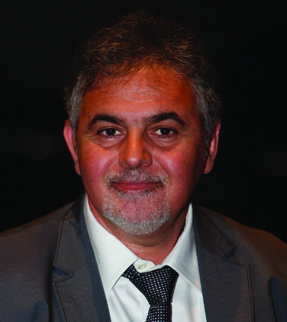
By Naci Kocer
Lately, flow diversion devices have been introduced to the clinical practice, offering endoluminal aneurysm occlusion by flow disruption. The most used flow diverter devices in the market, like Pipeline (Covidien) and Silk (Balt) as well as other new stents, are single-layer, low-porosity and self-expandable stents, forming high-coverage mesh that covers the aneurysm neck which simultaneously induces thrombosis of the aneurysm sac while preserving the patency of the adjacent small vessels. Alternatively, the Flow Re-direction Endoluminal Device (FRED; Microvention) is a novel flow diverter stent and has been in clinical use since 2012.
The dual-layer design, composed of woven inner and outer stents, is a distinctive feature of the FRED device. The inner part of 48 braided nitinol wires determines the working length. It is a low-porosity stent and acts like an active flow diverter segment at the neck region of the aneurysms, particularly at the inflow zone. The outer part, which determines the total length, is a high-porosity stent like an LVIS stent (Microvention) with 16 wires, serving as a scaffold for inner stent. The outer stent is 3mm longer than the inner flow diverter mesh at each end so that these proximal and distal parts of the FRED can be used to cover the adjacent perforating arteries or side branches of the parent vessel, with the advantage of being high porosity. Furthermore, the outer stent is able to decrease the friction taken place during navigation into the microcatheter owing to the fact that the outer stent has fewer wires compared to the other flow diverter devices. It is delivered through a 27 microcatheter and can be resheathable up to 50% (in practice 80–85%). No distal-end opening problem occurred during our procedures, even though the device was oversized compared to the distal parent artery in majority of the patients.
In our institution, 47 patients with 53 aneurysms were treated with FRED between February 2012–2014. Most of the aneurysms were located in the paraophthalmic segment of the internal carotid artery. Thirty-eight of them were saccular and 15 of them were fusiform in shape. In 51 aneurysms, a single FRED was used without any additional device or material. Nonetheless, in two cases, the aneurysms were occluded with coils in the same session. Two patients experienced a transient ischaemic attack. One had cerebral emboli related to the petrous internal carotid artery dissection and the other had ophthalmic transient ischaemic attack in whom the ophthalmic artery was originated from the sac itself. The symptoms disappeared in the same day. Permanent morbidity rates were 0%. One patient died after treatment due to eighth-day rupture of very large aneurysm (mortality rate: 2.1%). In the majority of the aneurysms, contrast stasis in the aneurysm was moderate (n=19) or significant (n=21) on immediate post-treatment digital subtraction angiography (DSA). The complete occlusion rates were 42% at 0–1 month, 72% at 2–3 months, 82% at 4–6 months, and 92% at 7–12 months.
The longer FRED device received the CE mark in December 2013. Increased stent length could give the opportunity to reconstruct longer aneurysmatic segments with a single stent. My future expectations of FRED (to have shorter and asymmetrical design of the inner stent, which is in proximity with proximal or distal end in a longer outer stent), could provide the opportunity to use this kind of flow diverter device for the aneurysms located more distally, such as anterior communicating artery or middle cerebral artery bifurcation.
Considering our experience and with the increasing number of the patients treated with FRED at this time, it seems this new device has the ability to treat cerebral aneurysms because of its different design and technical advantages. It nearly has similar occlusion rates in short- and mid-term follow-up when compared to the results of other flow diverter studies and meta-analyses. However, mid- and long-term follow-up results from a multicentre, large series are still required.
Naci Kocer is a professor of radiology and neuroradiology at Istanbul University, Cerrahpasa Medical Faculty, Department of Radiology, Division of Neuroradiology, Kocamustafapasa/Istanbul













